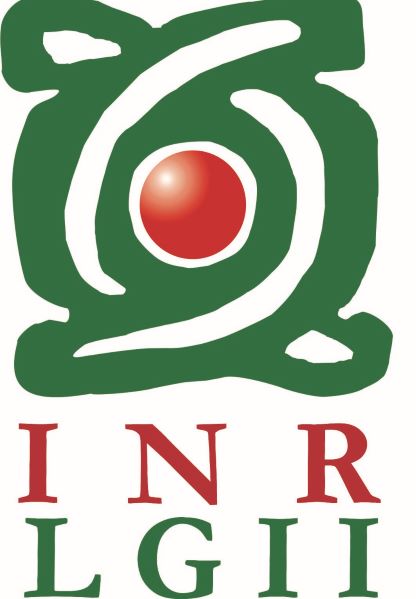Aislamiento y Caracterización de Células Troncales Mesenquimales en Sangre Periférica Humana
Palabras clave:
Células Troncales Mesenquimales, marcadores de superficie celular, InmunofenotipoResumen
Antecedentes: Las células troncales mesenquimales (CTM) se caracterizan por la expresión de marcadores de superficie específicos (CD73, CD90 y CD105) y por su capacidad de diferenciarse a los tres linajes de la línea mesenquimal (cartílago, hueso y tejido adiposo). Actualmente, la médula ósea (MO) es considerada la principal fuente de CTM en individuos adultos para su utilización en Ingeniería Tisular. La sangre periférica movilizada ha sido utilizada como fuente eficaz de CTM. Sin embargo, el aislamiento de CTM de remanentes de sangre periférica de donación no ha sido estudiado. Objetivo: Aislar y caracterizar CTM de sangre periférica del remanente de bolsas de donación (Buffy-coat). Metodos: Se obtuvieron 6 muestras de 20 ml de Sangre Periférica Humana (SPH) remanente de paquetes globulares en el INR-LGII. Las células mononucleares se aislaron con Ficoll, se cultivaron y expandieron durante 14 días. Resultados: Durante el aislamiento se identificó la presencia de un 8% de células positivas a marcadores de CTM (CD73, CD90 y CD105). Durante el cultivo se identificaron 2 poblaciones celulares: CT-hematopoyéticas y CT-Mesenquimales. A los 14 días de cultivo hubo una disminución de las células positivas a marcadores hematopoyéticos y un incremeto significativo de la positividad a marcadores de CTM. Conclusiones: Es posible aislar del remanente de donación sanguínea células con marcadores positivos para CTM
(CD73, CD90 y CD105), capaces de adherirse al plástico y multiplicarse disminuyendo significativamente su expresión de marcadores hematopoyéticos e incrementando la de marcadores característicos del linaje mesenquimal a los 14 días de cultivo in-vitro.
##plugins.generic.pfl.publicationFactsTitle##
##plugins.generic.pfl.reviewerProfiles## N/D
##plugins.generic.pfl.authorStatements##
Indexado: {$indexList}
-
##plugins.generic.pfl.indexedList##
- ##plugins.generic.pfl.academicSociety##
- N/D
Citas
Friedenstein AJ, Chailakhjan RK, Lalykina KS.
The development of fibroblast colonies in monolayer cultures of guinea-pig bone marrow and
spleen cells. Cell and tissue kinetics
;3:393-403.
Erices A, Conget P, Minguell JJ. Mesenchymal
progenitor cells in human umbilical cord blood.
Br J Haematol 2000;109:235-42.
Zuk PA, Zhu M, Mizuno H, et al. Multilineage
cells from human adipose tissue: implications
for cell-based therapies. Tissue Eng
;7:211-28
Landa-Solis C, Vazquez-Maya L, MartinezPardo ME, et al. Use of irradiated human amnion as a matrix for limbal stem cell culture.
Cell Tissue Bank 2013;14:77-84.
Noort WA, Kruisselbrink AB, in't Anker PS, et
al. Mesenchymal stem cells promote engraftment of human umbilical cord blood-derived
CD34(+) cells in NOD/SCID mice. Exp Hematol
;30:870-8.
Campagnoli C, Roberts I, Kumar S, Bennett
PR, Fisk NM. Clonal culture of fetal cells from
maternal blood. Lancet 2001;357:962.
Rammal H, Beroud J, Gentils M, et al. Reversing charges or how to improve Wharton's jelly
mesenchymal stem cells culture on polyelectrolyte multilayer films. Bio-medical materials
and engineering 2013;23:299-309.
Tondreau T, Meuleman N, Delforge A, et al.
Mesenchymal stem cells derived from CD133-
positive cells in mobilized peripheral blood and
cord blood: proliferation, Oct4 expression, and
plasticity. Stem Cells 2005;23:1105-12.
Villaron EM, Almeida J, Lopez-Holgado N, et
al. Mesenchymal stem cells are present in peripheral blood and can engraft after allogeneic
hematopoietic stem cell transplantation. Haematologica 2004;89:1421-7.
Gallardo F, Esteller M, Pujol RM, Costa C,
Estrach T, Servitje O. Methylation status of the
p15, p16 and MGMT promoter genes in primary cutaneous T-cell lymphomas. Haematologica 2004;89:1401-3.
Fu W-L, Zhang J-Y, Fu X, et al. Comparative
study of the biological characteristics of mesenchymal stem cells from bone marrow and
peripheral blood of rats. Tissue Eng Part A
;18:1793-803.
Azouna NB, Berraeis L, Regaya Z, Jenhani F.
Immunophenotyping of hematopoietic progenitor cells: Comparison between cord blood and
adult mobilized blood grafts. World J Stem
Cells 2011;3:104-12.
Villa-Diaz LG, Brown SE, Liu Y, et al. Derivation of mesenchymal stem cells from human
induced pluripotent stem cells cultured on synthetic substrates. Stem cells (Dayton, Ohio)
;30:1174-81.
Jin P, Wang E, Ren J, et al. Differentiation of
two types of mobilized peripheral blood stem
cells by microRNA and cDNA expression analysis. J Transl Med 2008;6:39.
Bieback K, Kern S, Kocaomer A, Ferlik K,
Bugert P. Comparing mesenchymal stromal
cells from different human tissues: bone marrow, adipose tissue and umbilical cord blood.
Biomed Mater Eng 2008;18:S71-6.
Lu R-N, Miao K-R, Zhang R, et al. Haploidentical hematopoietic stem cell transplantation following myeloablative conditioning regimens in
hematologic diseases with G-CSF-mobilized
peripheral blood stem cells grafts without T cell
depletion: a single center report of 38 cases.
Med Oncol 2014;31:81.
Deng J, Zou ZM, Zhou TL, et al. Bone marrow
mesenchymal stem cells can be mobilized into
peripheral blood by G-CSF in vivo and integrate into traumatically injured cerebral tissue.
Neurol Sci 2011;32:641-51.
Dominici M, Le Blanc K, Mueller I, et al. Minimal criteria for defining multipotent mesenchymal stromal cells. The International Society for
Cellular Therapy position statement. Cytotherapy 2006;8:315-7.
Lyahyai J, Mediano DR, Ranera B, et al. Isolation and characterization of ovine mesenchymal stem cells derived from peripheral blood.
BMC Vet Res 2012;8:169.
Jia LY, Zhang Q, Fang N, et al. [Enrichment
and Biological Characteristics of Peripheral
Blood-derived Mesenchymal Stem Cells in
Rats]. Zhongguo Shi Yan Xue Ye Xue Za Zhi
;23:506-11
Descargas
Publicado
Cómo citar
Número
Sección
Licencia
Derechos de autor 2018 Instituto Nacional de Rehabilitación Luis Guillermo Ibarra Ibarra

Esta obra está bajo una licencia internacional Creative Commons Atribución 4.0.
© Instituto Nacional de Rehabilitación Luis Guillermo Ibarra Ibarra under a Creative Commons Attribution 4.0 International (CC BY 4.0) license which allows to reproduce and modify the content if appropiate recognition to the original source is given.



